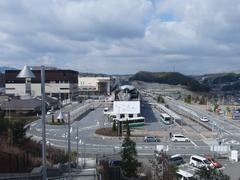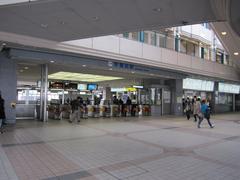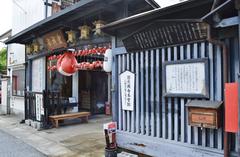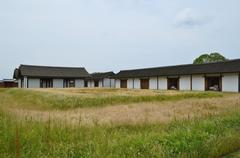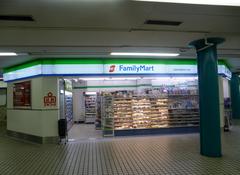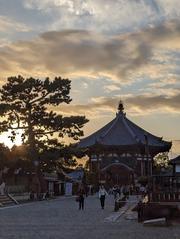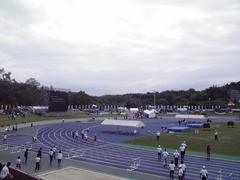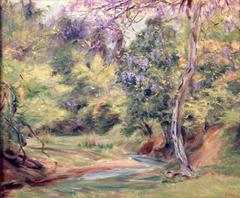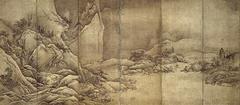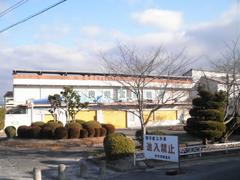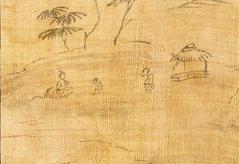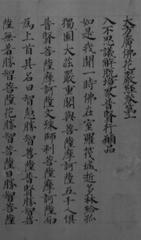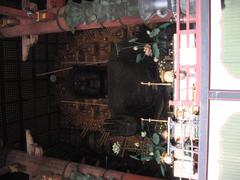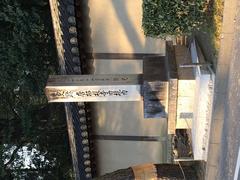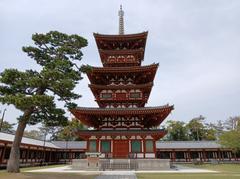Yamato Bunkakan Museum: Visiting Hours, Tickets, and Complete Guide to Nara’s Premier Historical Site
Date: 15/06/2025
Introduction
The Museum Yamato Bunkakan stands as a beacon of East Asian art and cultural preservation in Nara, Japan. Founded in 1960 by Torao Oita, then-president of the Kinki Nippon Railway Company, this museum houses over 20,000 works spanning Japan, China, Korea, and Vietnam—including four National Treasures and 31 Important Cultural Properties. Its collection offers a vivid narrative of regional artistry, from Buddhist sculptures and ceramics to paintings, textiles, and calligraphy.
Designed by renowned architect Isoya Yoshida, the museum harmoniously blends traditional Japanese elements—such as namako-kabe plaster walls and Yoshino red cedar—with its natural setting overlooking Sugawara and Hiruta Ponds. Surrounded by gardens featuring rare weeping cherry trees descended from the Miharu Takizakura, the museum is an ideal place for art lovers, history buffs, and travelers to immerse themselves in the legacy of East Asian culture.
This guide provides all the essential information on visiting hours, ticketing, accessibility, exhibitions, and nearby attractions, ensuring a rewarding and well-informed visit to the Museum Yamato Bunkakan. (Museum Yamato Bunkakan Official Website, Nara City Tourism Association, Wikipedia)
Table of Contents
- Introduction
- Historical Background and Vision
- Collection Highlights
- Architecture and Garden
- Visiting Information
- Special Exhibitions
- Nearby Attractions
- Visitor Amenities
- Visuals and Media
- FAQs
- Conclusion
- References
Historical Background and Vision
Founding and Development
The Museum Yamato Bunkakan originated from Torao Oita’s vision in the aftermath of World War II. Recognizing the need to foster cultural renewal, Oita and the Kintetsu Corporation planned the museum even before assembling its collection, ensuring a scholarly and systematic approach to curation (Kintetsu Museum Yamato Bunkakan). The first director, art historian Yukio Yashiro, emphasized collecting works that embodied the aesthetic essence of each era and culture. This philosophy continues to inform the museum’s acquisitions and exhibition programming.
Leadership and Institutional Philosophy
Yashiro’s leadership emphasized the universality of art and its integration with nature. Successors have continued to prioritize not just preservation, but also education and public engagement, making the museum a vibrant cultural hub in Nara.
Collection Highlights
The museum’s holdings span over 20,000 pieces, offering comprehensive insight into East Asian art:
- Sculpture: Buddhist statues and religious artifacts from Japan, China, and Korea.
- Ceramics: Pottery from multiple periods and regions, including Vietnam.
- Lacquerware: Masterful objects demonstrating technical and artistic prowess.
- Paintings and Prints: Japanese Yamato-e, Chinese, and Korean works, including narrative scrolls and folding screens.
- Textiles and Calligraphy: Rare textiles and manuscripts that illuminate literary and cultural traditions.
National Treasures and Important Cultural Properties
Among the most significant works are four National Treasures and 31 Important Cultural Properties, such as scenes from the “Nezame Monogatari Emaki,” a masterpiece of Heian-period painting (Wikipedia, Nara City Guide).
Architecture and Garden
Building Design
Designed by Isoya Yoshida, the museum features traditional Momoyama-inspired namako-kabe plaster walls and interiors crafted from locally sourced Yoshino red cedar. Large windows employ the “shakkei” (borrowed scenery) technique, integrating garden and pond views into the gallery experience.
Garden and Setting
The museum’s grounds are landscaped with native flora and rare weeping cherry trees, offering striking seasonal displays—cherry blossoms in spring, vibrant foliage in autumn. Paths and benches encourage quiet contemplation, while the proximity to Sugawara and Hiruta Ponds creates a tranquil microclimate (Nara City Tourism Association).
Visiting Information
Hours and Closures
- Open: 10:00 AM to 5:00 PM (last admission at 4:00 PM)
- Closed: Mondays (or next business day if Monday is a national holiday), year-end/New Year holidays, and during exhibition changeovers
- Note: Special exhibition periods may affect hours; check the official website before visiting.
Tickets and Discounts
- Adults: 630–1,000 yen (depending on exhibition)
- University/High School Students: 420–700 yen
- Elementary/Junior High Students: Free
- Discounts:
- 20% off for groups of 20+
- 20% off for visitors with disability certificates and one caregiver
- Free admission for group leaders
- Purchase: At museum entrance or online (official website)
Access and Transportation
- Address: 1-1-6 Gakuenminami, Nara, Nara Prefecture, Japan
- By Train: 7-minute walk from Gakuenmae Station (Kintetsu Nara Line, south exit)
- By Car: Parking available for up to 50 vehicles
Accessibility
- Wheelchair accessible with ramps, elevators, and accessible restrooms
- Service animals welcome
- Labels and materials available in Japanese and English
Guided Tours and Events
- Guided Tours: Free tours led by curators every Saturday at 2:00 PM (no reservation required)
- Lectures: Special Sunday art lectures during exhibitions
- Workshops: Periodic hands-on sessions in calligraphy, ink painting, and ceramics
- Educational Resources: Booklets, catalogues, and digital guides
Special and Rotating Exhibitions
The museum organizes eight themed exhibitions annually, drawing from its own collection and loaned works.
Highlights:
- “The Heart of Yamato-e Painting”: Explores the evolution of Japanese narrative painting (Nara Sightseeing)
- Yukio Yashiro 50th Death Anniversary Exhibition (April 12 – May 25, 2025)
- “Blowing in the Wind: Representations of Weather in East Asian Art” (May 30 – July 6, 2025) (Trip.com)
- Bugaku—The Art of Court Performance (October 4 – November 9, 2025)
- Painting the Waterside (November 14 – December 25, 2025)
- Character Representations and Stories in East Asia (January 6 – February 15, 2026)
- Asian Pottery (February 20 – April 5, 2026)
For the latest schedule, visit the exhibition page.
Nearby Attractions
Complement your museum visit with these Nara highlights:
- Todai-ji Temple: Home to the Great Buddha
- Nara Park: Famous for roaming deer and scenic beauty
- Kasuga Taisha Shrine: Renowned for lantern festivals
- Kofuku-ji Temple: Iconic five-story pagoda
- Nakano Museum of Art: Nearby for more art exploration
Visitor Amenities
- Café: Relax with views of the garden
- Museum Shop: Local crafts, art books, and souvenirs
- Lockers: Secure storage for personal belongings
- Rest Areas: Benches inside and throughout the garden
- Photography: Permitted in gardens; restricted in most galleries (check signage)
Visuals and Media
Preview the museum’s architecture and gardens via high-quality images and virtual tours on the official website. Top photo spots include the entrance stairway, cherry blossom clusters, and pond reflections.
Frequently Asked Questions (FAQ)
Q: What are the museum’s opening hours?
A: 10:00 AM to 5:00 PM (last entry 4:00 PM); closed Mondays and select holidays.
Q: How much are tickets?
A: Adults 630–1,000 yen; students 420–700 yen; children free. Discounts available.
Q: Is the museum accessible for visitors with disabilities?
A: Yes, with ramps, elevators, accessible restrooms, and service animal access.
Q: Are guided tours available?
A: Yes, every Saturday at 2:00 PM; special lectures during exhibitions.
Q: Can I buy tickets online?
A: Yes, via the official website.
Q: Is parking available?
A: Yes, for up to 50 vehicles.
Q: Are there nearby attractions?
A: Yes—Todai-ji Temple, Nara Park, Kasuga Taisha Shrine, and more.
Conclusion
The Museum Yamato Bunkakan is a cornerstone of art and cultural exploration in Nara. Its renowned collection, innovative architecture, and tranquil setting make it a standout destination for anyone interested in Japan’s artistic and historical legacy. Plan your visit by checking current hours and exhibitions on the official website, and enrich your experience with a stroll through the gardens or a guided tour. Combine your visit with other historic sites in Nara for a truly immersive cultural journey.
External Links:
- Museum Yamato Bunkakan Official Website
- Nara City Tourism Association
- WhichMuseum Visiting Hours
- Nara Sightseeing Blog
- Wikipedia – Museum Yamato Bunkakan
- Nara City Guide – Museum Yamato Bunkakan
- Kintetsu Exhibition Schedule
- Trip.com – Special Exhibition
- Nara Yamato Guide
All information is accurate as of June 15, 2025. For updates, consult the museum’s official resources.
